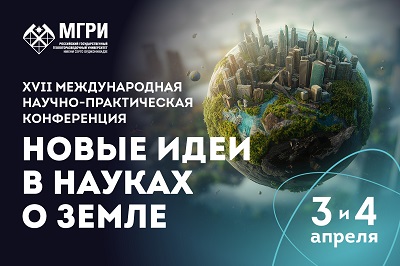Geological foundations for determination of anisotropic directions in geostatistical modeling on the example of Verkhnee orebody of the Mnogovershinnoe gold deposit
https://doi.org/10.32454/0016-7762-2022-64-5-73-85
Abstract
Background. When calculating reserves using geostatistical methods, variographic analysis can occasionally encounter difficulties in determining the direction of the search ellipsoid, particularly in deposits with a lognormal distribution of the useful component. The search ellipsoid defines the main directions of mineralization anisotropy, thus comprising a key element in the process of interpolating grades into a block model. The correct interpolation of grades provides a reliable estimate of reserves.
Aim. To determine the influence of the orebody morphology on anisotropic directions.
Materials and methods. Data from a report on the technical and economic substantiation of the resource and estimation parameters of the Mnogovershinnoe gold deposit for 1975 were used, along with a database comprising catalogues of borehole coordinates, mining outputs, inclinometry and exploratory test data. Three-dimensional computer modeling was performed in the Micromine mining and geological information system. Using the example of the Verkhnee orebody of the Mnogovershinnoe gold deposit, statistical and geostatistical studies were carried out to calculate the reserves. The as-calculated reserves were compared with those estimated by a polygonal method and approved by the State Commission for Mineral Reserves (GKZ) USSR in 1975.
Results. The conducted comparison of the geological interpretation of the orebody under study, obtained by both wireframe modeling based on exploratory test data and the search ellipsoid constructed by variographic analysis, сonfirmed the influence of the orebody morphology on the axis directions of the minimal variability of mineralization. The orientation of the search ellipsoid was determined to be consistent with the geological interpretation of the orebody. Verification of the interpolated block model showed the estimate to be close to a reliable value. The comparison of the calculated reserves with those of 1975 showed their good convergence.
About the Authors
R. A. SkruybiteRussian Federation
Rasa A. Skruybite — Applicant for the degree of Cand. of Sci (Geol.-Min.) at the Department of Geology of Mineral Deposits
23, Miklukho-Maklaya str., Moscow 117997
+7 (926) 585-18-51
Sh. I. Fakhrutdinov
Russian Federation
Shamil I. Fakhrutdinov — Cand. of Sci. (Geol.-Min.), Associate Professor of the Department of Informatics and GIS, Faculty of Geology and Geophysic of Oil and Gas
23, Miklukho-Maklaya str., Moscow 117997
+7 (916) 134-98-44
References
1. Boytsov V.E., Pilipenko G.N., Solodov N.A. Deposits of noble, radioactive and rare metals. Moscow: NIAPRIRODA Publ., 1999. 220 p. (In Russian).
2. Kazhdan A.B. Exploration of mineral deposits. Moscow: Nedra Publ., 1977. 327 p. (In Russian).
3. Kaputin Yu.E. Mining Computer Technologies and Geostatistics. St. Petersburg: Nedra Publ., 2002. 424 p. (In Russian).
4. Kaputin Yu.E. Improving the efficiency of management of mineral resources of a mining company (geological aspects). St. Petersburg: Nedra Publ., 2013. 246 p. (In Russian).
5. Kogan I.D. Calculation of reserves and geological and industrial evaluation of ore deposits. Moscow: Nedra Publ., 1974. 304 p. (In Russian).
6. Konstantinov M.M., Vargunina N.P., Kosovets T.N., Struzhkov S.F., Syngaevskiy E.D., Shishakova L.N. Gold and silver deposits. Series: Models of deposits of noble and non-ferrous metals. Moscow: TsNIGRI Publ., 2000. 239 p. (In Russian).
7. Recommendations for the composition and rules for the design of materials submitted for state expertise on the feasibility study of conditions and the calculation of solid mineral reserves using block modeling at deposits of various morphological types. Moscow: GKZ MPR RF Publ., 2015. 86 p. (In Russian).
8. Ore Deposits of the USSR (edited by Academician Smirnov V.I.). Moscow: Nedra Publ., 1978. Vol. 3. 496 p. (In Russian).
9. Skruybite R.A., Akifeva A.D., Gil V.A. Experience of state expertise in calculating reserves of solid minerals and feasibility studies of conditions performed using geostatistical methods // Exploration and protection of mineral resources. 2016. No. 8. P. 56—58. (In Russian).
10. Starostin V.I., Ignatov P.A. Mineral geology. Moscow: Akademicheskiy Prospekt Publ., 2006. 512 p. (In Russian).
11. Khokhlov E.P., Usanov G.E., Zarembskiy E.P., Ageev A.T. Geological structure and industrial assessment of the Mnogovershinnoye gold deposit. Report on the results of the work of the Mnogovershinnoye party for 1968—75 as of 01.10.1975. Mnogovershinnyy, 1975. 242 p. (In Russian).
12. Coombes J. The art and science of resource estimation. Perth: Coombes Capability, 2008. 231 p.
13. Isaaks E., Srivastava M. An Introduction to Applied Geostatistics, N.Y.: Oxford University Press, 1989. 592 p.
14. Rossi M., Deutsch C. Mineral Resource Estimation. Dordrecht: Springer, 2014. 346 p.
Review
For citations:
Skruybite R.A., Fakhrutdinov Sh.I. Geological foundations for determination of anisotropic directions in geostatistical modeling on the example of Verkhnee orebody of the Mnogovershinnoe gold deposit. Proceedings of higher educational establishments. Geology and Exploration. 2022;(5):73-85. (In Russ.) https://doi.org/10.32454/0016-7762-2022-64-5-73-85









































